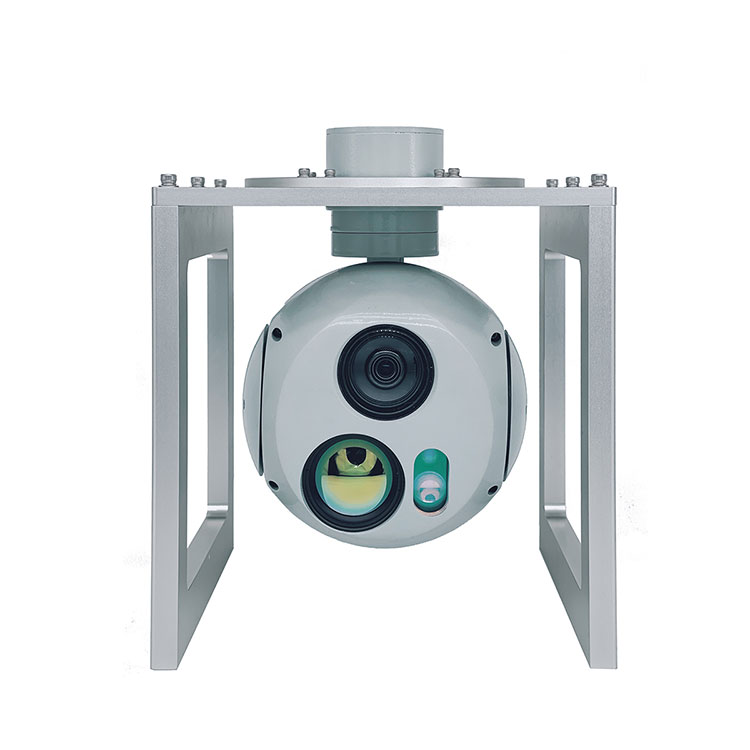How Do Optical Pods Enhance Precision in Modern Imaging Systems?
2025-09-02
Optical technology is the backbone of today’s high-performance imaging and sensing systems. Among the key components driving advancements in fields such as telecommunications, medical imaging, industrial inspection, and aerospace engineering, optical pods have emerged as a critical innovation. Designed to deliver precise control over light transmission, reflection, and refraction, these compact yet highly functional modules are revolutionizing how optical data is captured and processed.
What Are Optical Pods and Why Are They Important?
Optical pods are compact, integrated optical assemblies designed to manage, manipulate, and transmit light within advanced imaging and sensing systems. They combine multiple optical components—such as lenses, filters, prisms, and sensors—into a single streamlined unit. Their main purpose is to maximize optical performance while minimizing system complexity and size.
Unlike traditional optical systems where components are mounted separately, optical pods are pre-aligned, factory-calibrated, and modular, reducing the burden on engineers and manufacturers. Their precision and reliability make them essential in industries where micrometer-level accuracy and consistent optical quality are non-negotiable.
Key Advantages of Optical Pods
-
Miniaturization: Reduce overall system size without sacrificing performance.
-
High Precision: Achieve superior image clarity and signal fidelity.
-
Modularity: Easily integrate into existing imaging systems.
-
Reliability: Pre-aligned to avoid user calibration errors.
-
Versatility: Suitable for applications across diverse sectors.
For example, in a medical diagnostic imaging device, an optical pod can enhance image quality by accurately directing and focusing light onto sensors. Similarly, in LiDAR systems used for autonomous vehicles, optical pods improve detection accuracy and reduce signal noise, enabling safer navigation.
How Do Optical Pods Work in Advanced Imaging Systems?
Optical pods integrate several optical elements into a self-contained, precision-engineered module. The working principle is based on the controlled manipulation of light paths to achieve optimal imaging and data acquisition.
When light enters the optical pod, it passes through a carefully aligned series of lenses, filters, and sensors. Each component has a dedicated role:
-
Lenses focus or diverge light for clear image capture.
-
Filters isolate specific wavelengths to enhance contrast.
-
Prisms or Mirrors redirect light paths for compact designs.
-
Sensors detect and convert light signals into usable data.
This seamless integration eliminates misalignments that often occur in traditional optical assemblies. As a result, optical pods deliver high-resolution images, superior signal-to-noise ratios, and consistent performance even under challenging environmental conditions.
Technical Specifications of Jioptik Optical Pods
| Parameter | Specification | Description |
|---|---|---|
| Optical Resolution | Up to 4K UHD | High-definition image capture |
| Wavelength Range | 400nm – 1100nm | Supports visible to near-infrared applications |
| Lens Aperture | f/1.8 – f/4.0 | Optimized for low-light and high-contrast scenes |
| Field of View (FOV) | 15° – 120° | Adjustable for wide or narrow perspectives |
| Sensor Compatibility | CMOS / CCD | Integrates with modern imaging technologies |
| Thermal Stability | ±0.05°C | Maintains precision in extreme environments |
| Material | Anti-reflective coated glass | Reduces losses and enhances image brightness |
These parameters demonstrate how Jioptik optical pods are engineered to deliver industrial-grade performance across a wide range of applications.
Where Are Optical Pods Used and Why Are They Growing in Demand?
Optical pods are finding applications across diverse sectors where accuracy, reliability, and miniaturization are critical. The growing demand for high-resolution imaging and data-driven technologies makes optical pods a preferred choice for engineers and system integrators.
Major Application Areas
a) Medical Imaging
Instruments such as endoscopes, retinal scanners, and surgical microscopes rely on optical pods to deliver crystal-clear images. The integration of compact, pre-aligned optics ensures minimal signal distortion, improving diagnostic precision and patient outcomes.
b) Autonomous Vehicles & LiDAR Systems
Optical pods enhance LiDAR’s ability to map environments in real-time. They improve distance measurement accuracy, enabling autonomous vehicles to detect obstacles, pedestrians, and road boundaries with unparalleled precision.
c) Industrial Machine Vision
Factories and production lines are increasingly adopting optical pods for automated inspection systems. High-resolution pods help detect microscopic defects on products, ensuring consistent quality control.
d) Aerospace & Defense
In aerospace, optical pods are used in navigation, surveillance, and satellite imaging systems. Their robustness and thermal stability make them suitable for harsh environmental conditions.
e) Telecommunications & Data Centers
High-speed optical networks depend on precise light manipulation for signal transmission and switching. Optical pods reduce signal loss and enhance overall network performance.
Why Demand Is Rising
-
Shift toward miniaturized imaging devices
-
Growing autonomous vehicle market
-
Higher demand for 4K and 8K imaging systems
-
Adoption of AI-driven inspection technologies
-
Expanding IoT and smart manufacturing ecosystems
FAQs About Optical Pods
Q1. What makes optical pods different from traditional optical assemblies?
Answer:
Traditional assemblies require multiple separate optical components, often leading to alignment errors, increased size, and higher costs. Optical pods, on the other hand, are pre-integrated, compact, and factory-calibrated. This makes them easier to install, more reliable, and better suited for next-generation imaging systems where space and accuracy are critical.
Q2. Are Jioptik optical pods customizable for specific applications?
Answer:
Yes. Jioptik offers a range of customized optical pod solutions tailored to industry-specific needs. Whether you require wider field-of-view lenses for drones, specialized wavelength filters for medical imaging, or thermal-resistant materials for aerospace environments, Jioptik engineers design optical pods that seamlessly integrate into your system while meeting performance, durability, and compliance requirements.
Empowering the Future of Imaging with Jioptik Optical Pods
From medical diagnostics to autonomous navigation and industrial inspection, optical pods are redefining how light is controlled, captured, and processed. Their miniaturized form, high precision, and unmatched reliability make them a cornerstone of modern imaging technologies.
At Jioptik, we are committed to developing cutting-edge optical pod solutions that push the boundaries of optical performance. With a focus on innovation, customization, and quality assurance, our optical pods empower industries to achieve next-level imaging accuracy.
If you’re ready to explore how our optical pods can transform your imaging systems, contact us today to discuss your project needs and discover customized solutions that give you a competitive edge.



